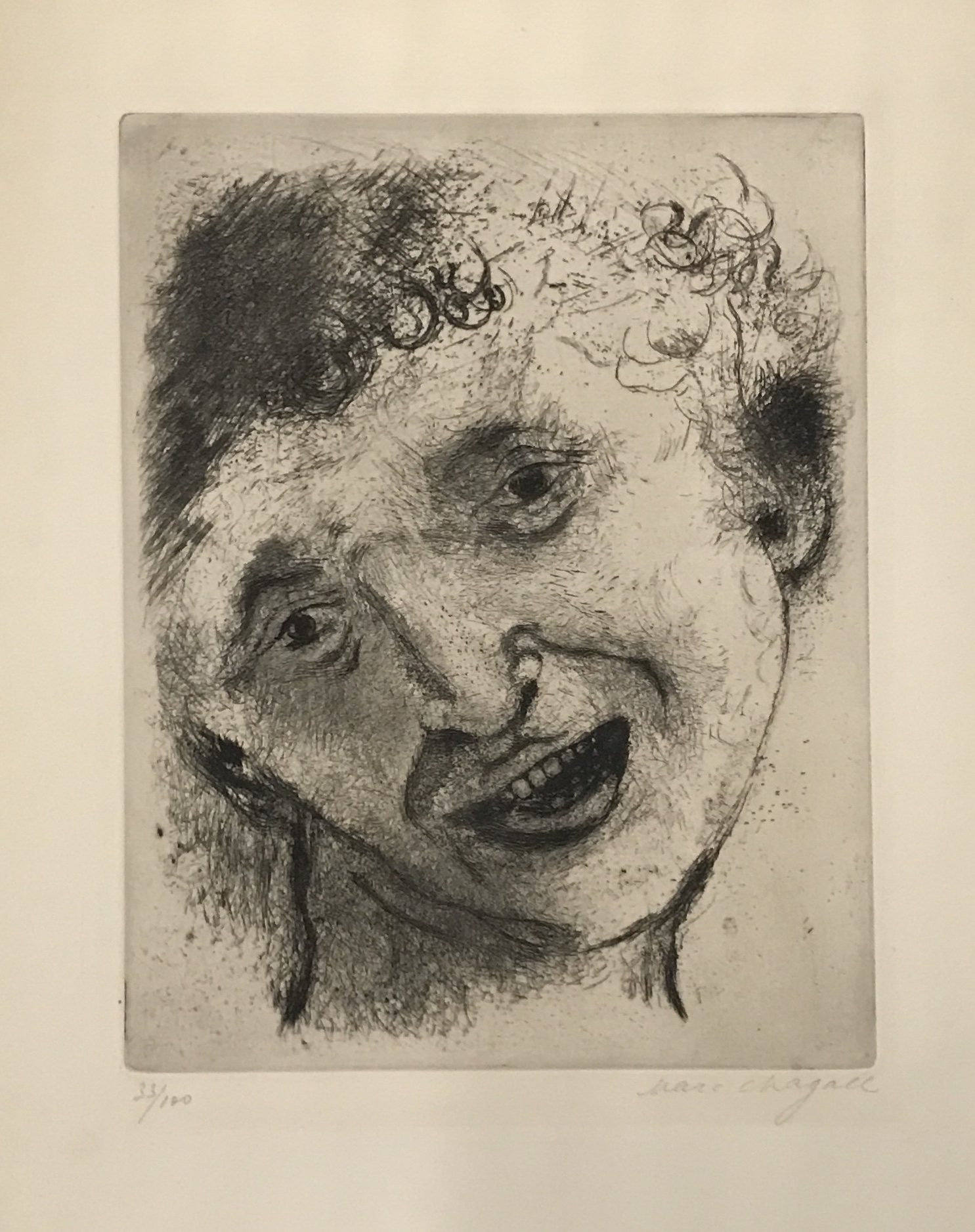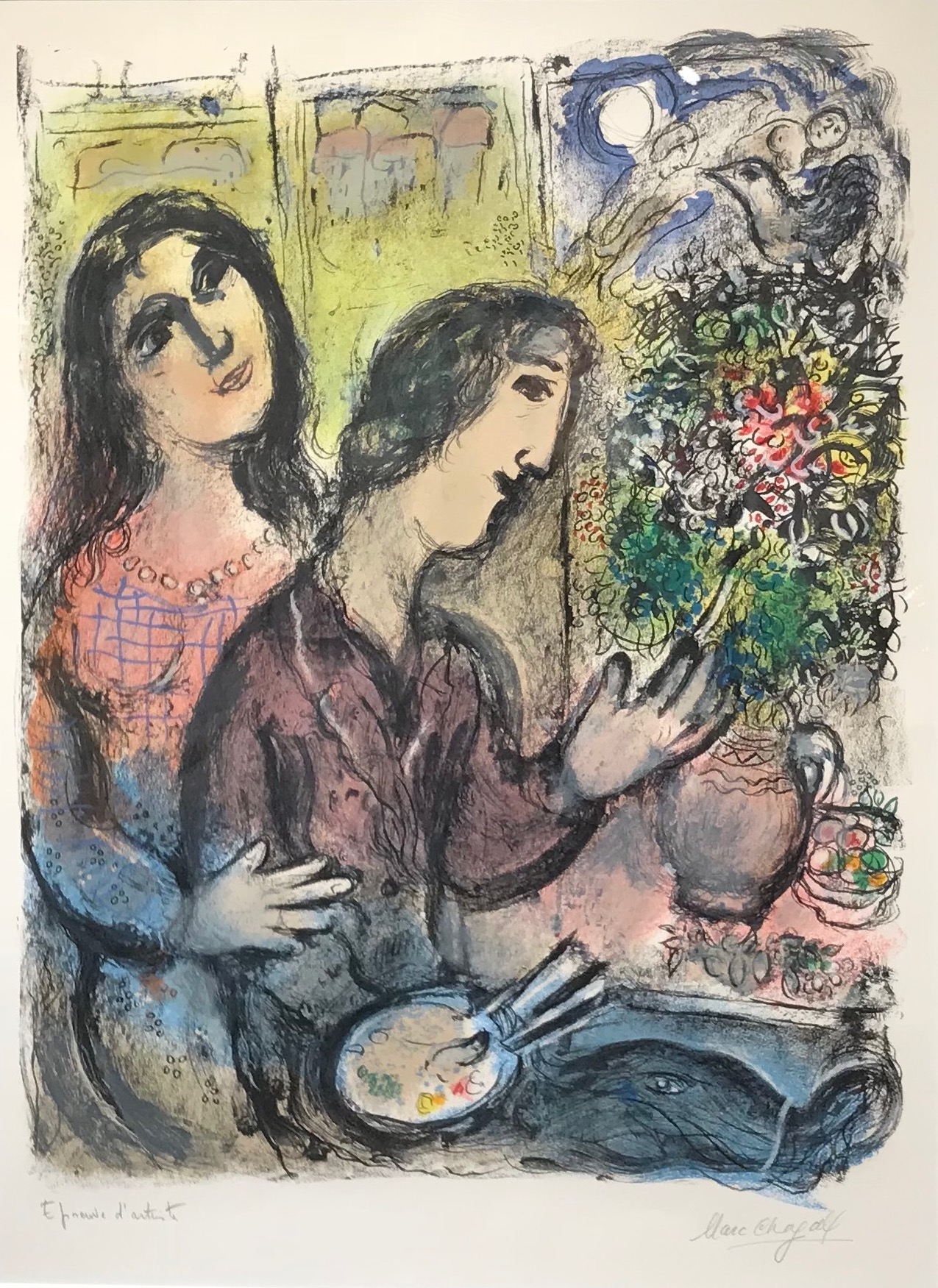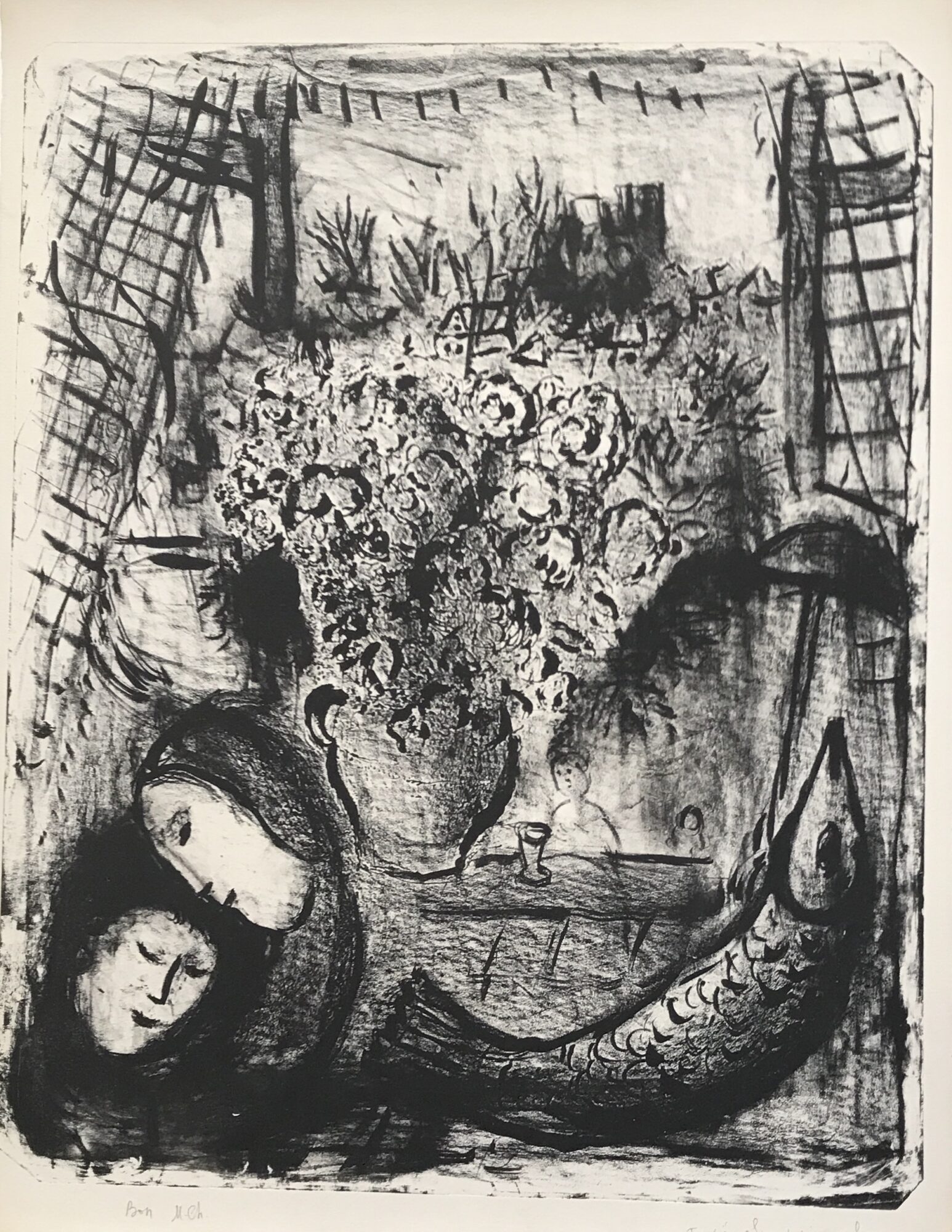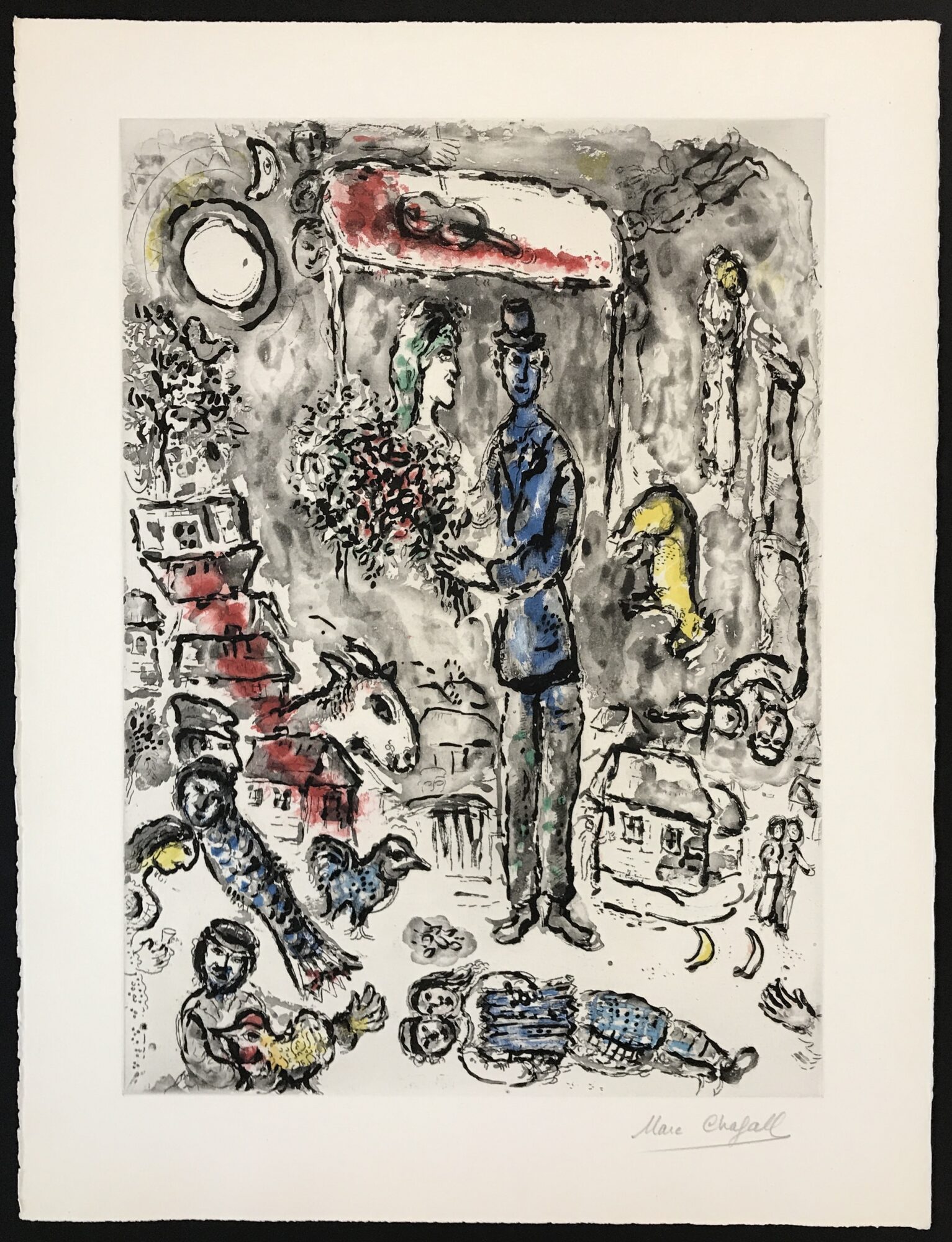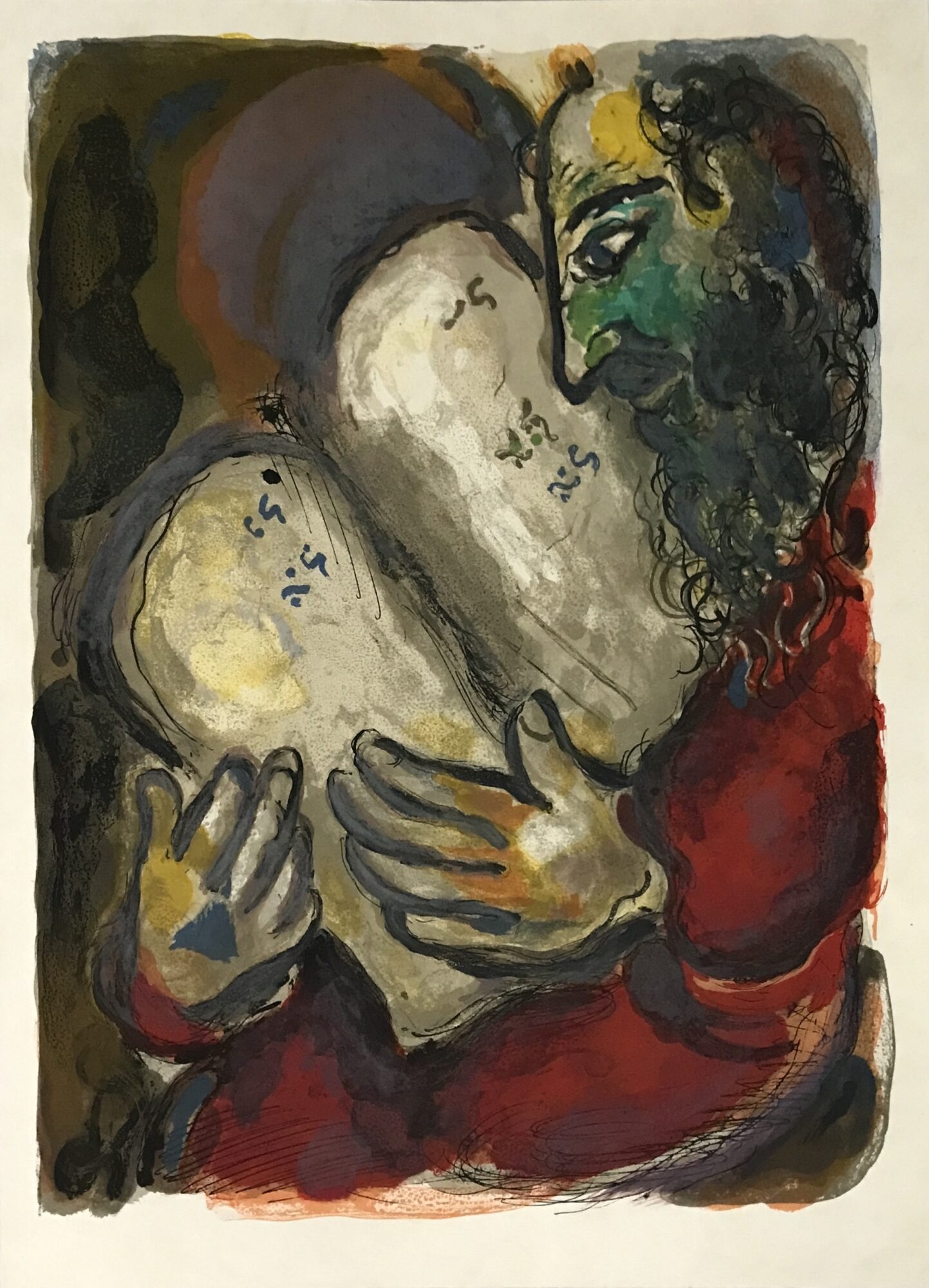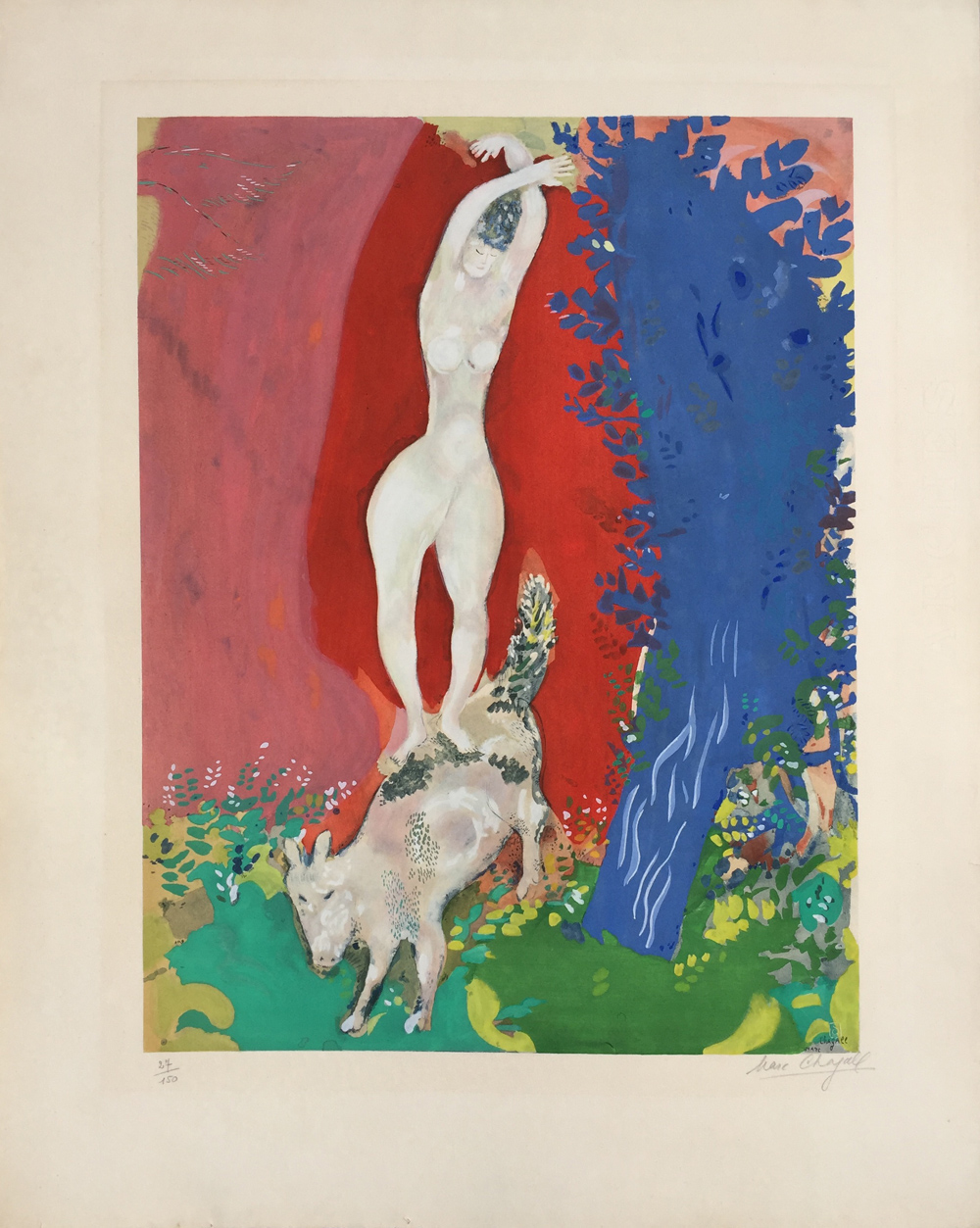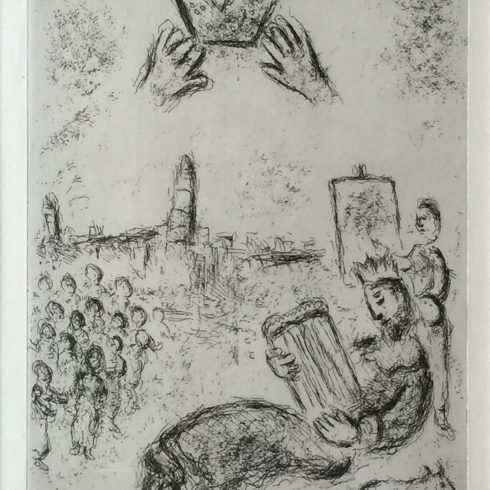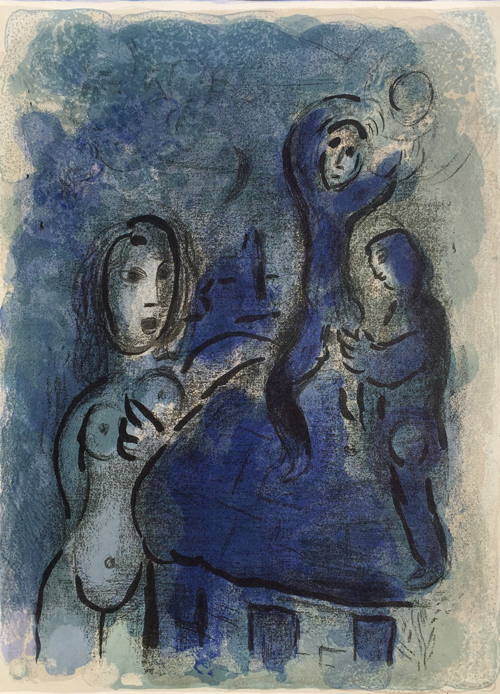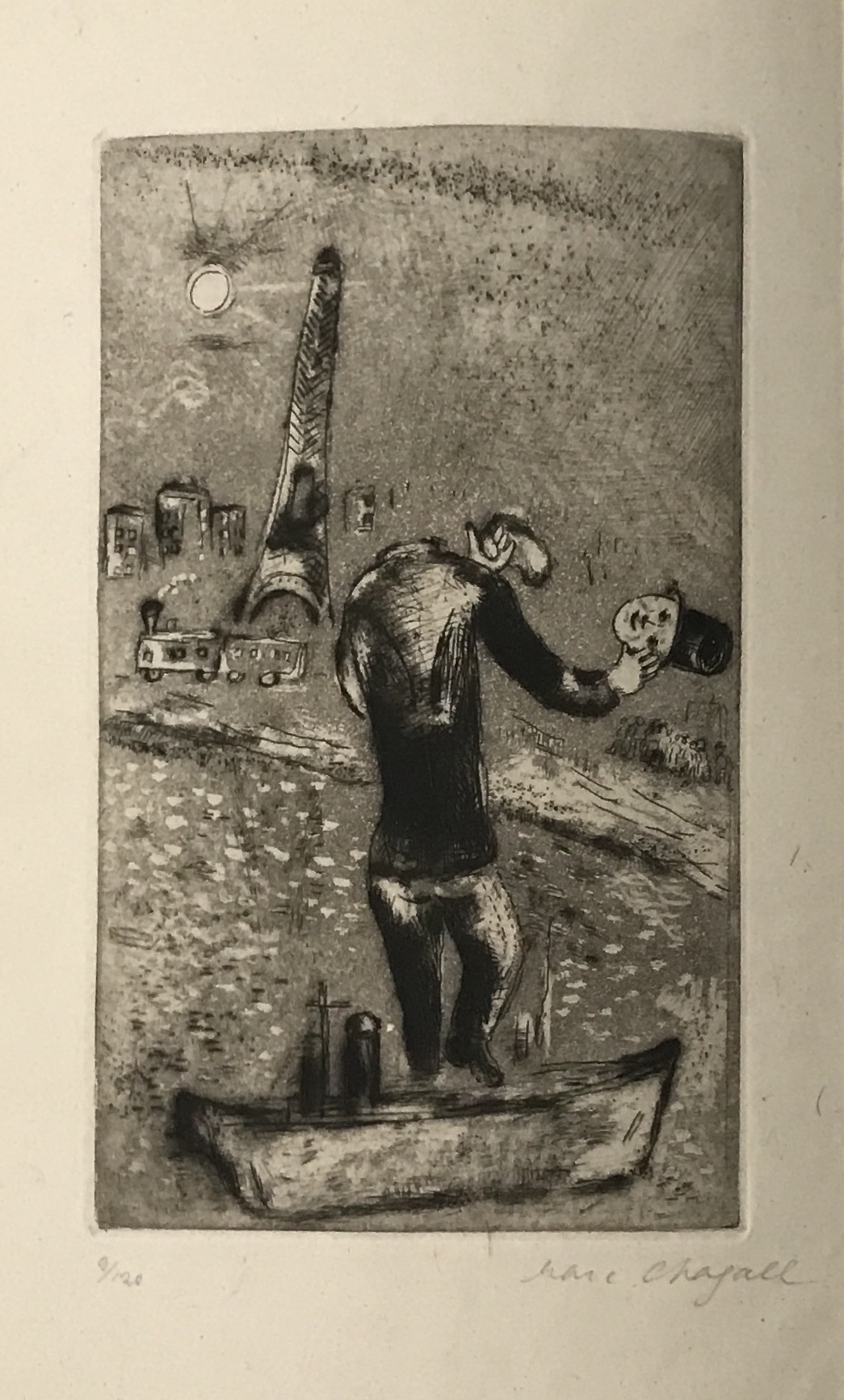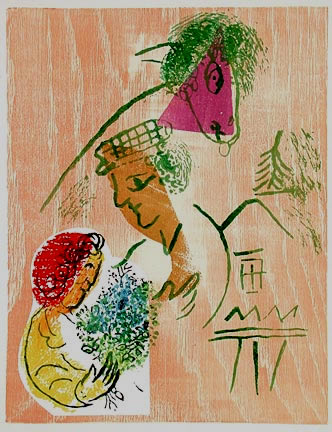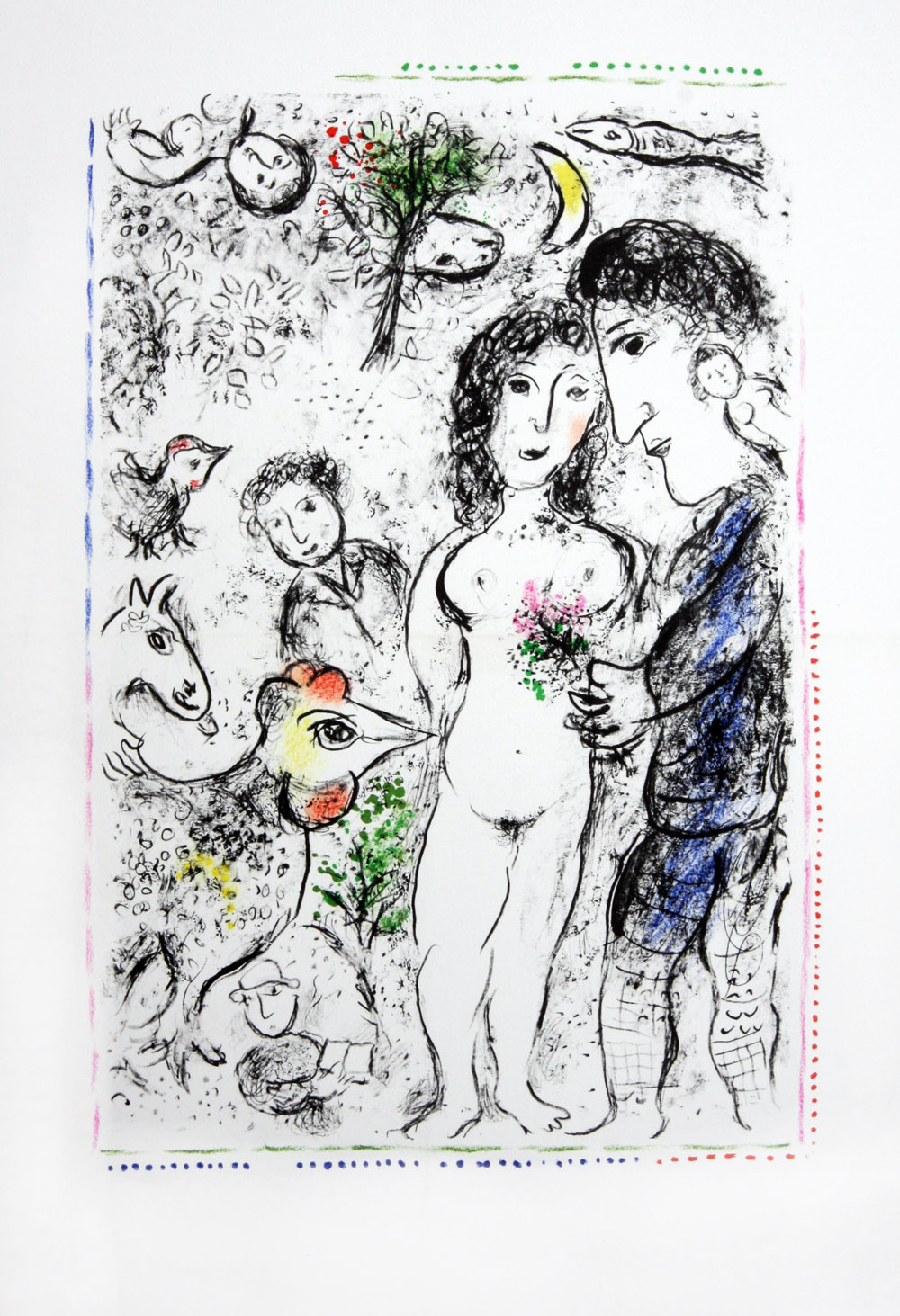Marc Chagall Art For Sale
Marc Chagall was a Russian-French artist of Belarusian Jewish origin. An early modernist, he was associated with several major artistic styles and created works in virtually every artistic format, including painting, book illustrations, stained glass, stage sets, ceramic, tapestries and fine art prints.
Marc Chagall’s art anticipated the dream-like imagery of Surrealism. Over the course of his career Marc Chagall developed the poetic, amorphous, and deeply personal visual language evident in the painting I and the Village (1911). “When I am finishing a picture, I hold some God-made object up to it—a rock, a flower, the branch of a tree or my hand as a final test,” he said. “If the painting stands up beside a thing man cannot make, the painting is authentic. If there’s a clash between the two, it’s bad art.” Born Moishe Shagal on July 7, 1887 in Vitebsk, Russia (present-day Belarus) to a Hasidic Jewish family, the artist was raised immersed in Jewish culture and iconography.
Our Fine Art Gallery has the finest quality of Marc Chagall original prints, lithographs, etchings, aquatints and posters. We have a large inventory available off-site and we encourage you to make an appointment to see specific works you are looking to collect. We are happy to meet you at either our art gallery showroom or at your home or office for a private presentation.
About Marc Chagall
Marc Chagall’s artworks have been praised as having a major impact on Surrealism, and contain elements of the Cubist, Orphism and Fauvist movements. Marc Chagall’s art is characterized by imagery drawn from the quaint Jewish village in which Marc Chagall was raised. The animals of his childhood, strong family heritage, Jewish faith, and the vitality of Paris are the major themes in Chagall’s art. In all of Chagall’s paintings, lithographs, and etching these first impressions create unique autobiographical images that included floating lovers, massive bouquets of joyful flowers, the gentle horse or cow, the watchful rooster, and the merriment of the circus.
READ MORE +
Marc Chagall began his arts education at the local art school in Vitebsk, where Chagall was the only pupil who painted with violet. In 1907 Marc Chagall moved to St. Petersburg and briefly studied with the famed Russian painter Leon Bakst. It was in Bakst’s studio where Marc Chagall was exposed to the Modern Art movement that was sweeping Paris.
Marc Chagall moved to Paris in 1910, befriending avant-garde poets, writers and painters. While living at the dilapidated artist commune, “La Ruche” (The Beehive) near the slaughterhouses in Montparnasse, Marc Chagall met and worked with artists: Fernand Leger, Georges Braque, Henri Matisse, Pablo Picasso, and Joan Miro. Marc Chagall participated in the 1912-1914 Paris salons, and Chagall’s first one man show took place in Germany in 1914.
At the outbreak of WWI Marc Chagall returned to Russia to marry his fiancee Bella Rosenfeld. Chagall’s undying love for Bella would be one of his artistic inspirations for the rest of his life, often appearing in Chagall’s graphic works as a curvaceous nude clad in pearls or an apparition watching over Marc Chagall at his easel. During WWI Marc Chagall and Bella had their first child, Ida (named after the Chagall’s mother). The Chagall family would remain in Russia throughout the war years and moved back to Paris in 1923.
In Paris, Marc Chagall formed a business relationship with art dealer Ambroise Vollard. Encouraged by Vollard to take on the art of printmaking, Marc Chagall created extraordinary etchings and lithographs at the Mourlot Atelier. The etchings and lithographs from this time brought Marc Chagall international attention, especially the etchings for Les Fables de la Fontaine the French equivalent of Aesop’s Fables.
WWII forced Marc Chagall and his family to leave France again. Marc Chagall narrowly escaped persecution from the Nazis by fleeing to the United States in 1941. While in the United States, Marc Chagall created set designs and costumes for highly acclaimed ballets and operas performed at the Metropolitan Opera in New York.
In 1944 Chagall’s beloved wife Bella tragically died from an untreated viral infection. Inconsolable, Marc Chagall turned his canvases to the wall, and Chagall was unable to work for almost a year.
Upon Chagall’s return to France in 1947, Marc Chagall found himself under the guidance of master printer Charles Sorlier at Mourlot Freres Atelier—a well known Parisian lithography studio. The partnership between Marc Chagall and Sorlier was extremely fruitful, and Chagall created over 1000 original lithographs at the Mourlot studio. During this time Chagall completed many lithographic series including The Bible,The Story of Exodus, The Circus, Daphnis and Chloe and The Odyssey. Often Mark Chagall would travel to foreign countries for inspiration and Chagall used up to 25 different lithographic plates per print to achieve the perfect expression of color. Chagall’s mastery as a colorist was noted by Pablo Picasso who said “When Matisse dies, Marc Chagall will be the only painter left who understands what color really is”.
Marc Chagall died at his Saint Paul de Vence home in March 1985 at the age of 97. Marc Chagall was considered a highly regarded, decorated and exhibited artist.
“In our life there is a single color, as on an artist’s palette, which provides the meaning of life and art. It is the color of love.” – Marc Chagall
Select Museum Collections:
Musee National Message Biblique Marc Chagall, Nice
Museum of Modern Art, New York
Metropolitan Museum, New York
Guggenheim Museum, New York
Hermitage Museum, St. Petersburg
Art Institute of Chicago
Guggenheim Collection, Venice
Kunstmuseum Basel, Switzerland
Tate Gallery, London
Jewish Museum, New York
Tel Aviv Museum of Art, Israel


